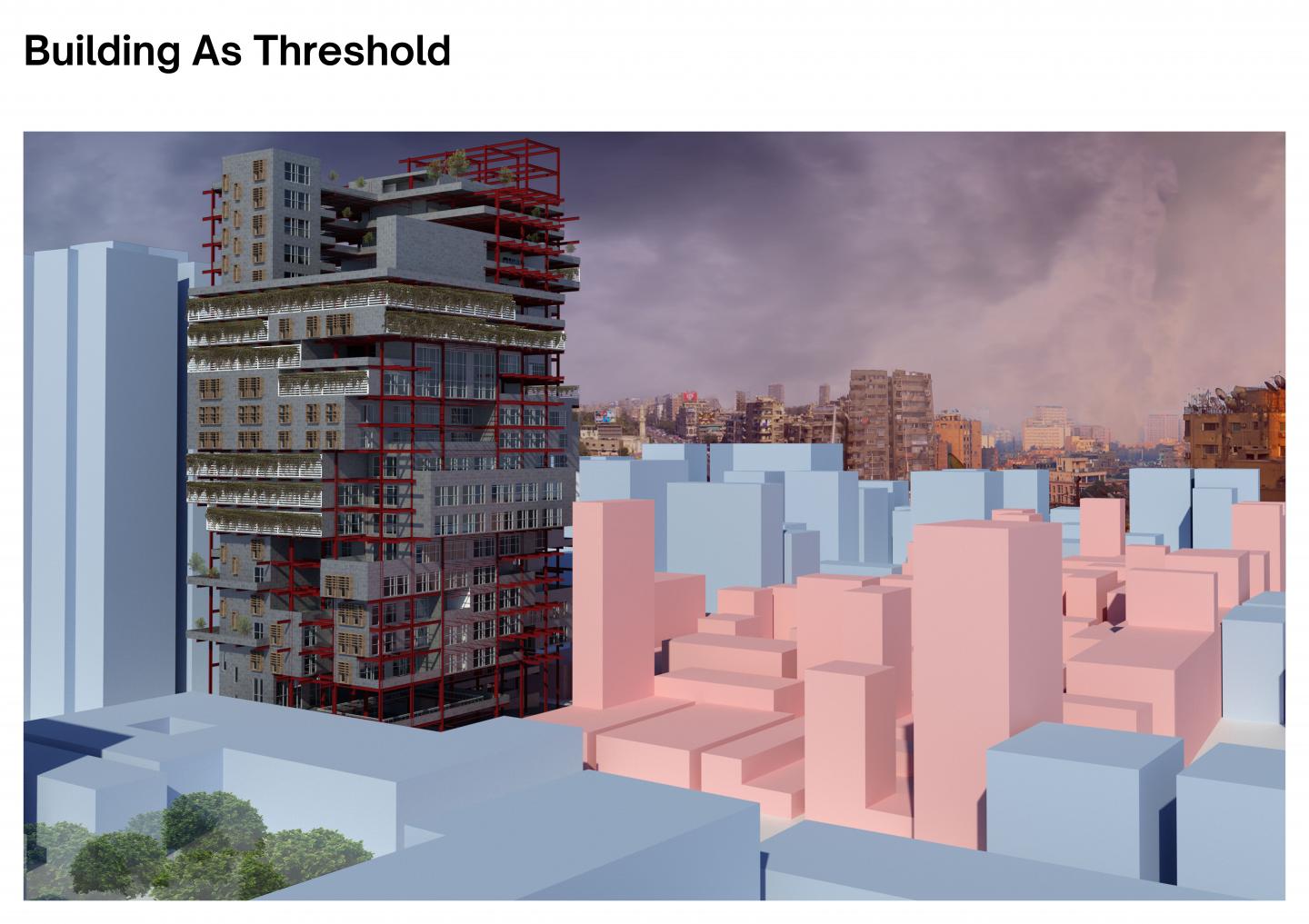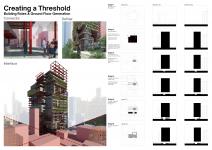The Awlad Allam Theatre Company feels like a small city, an extension of life in the Awlad Allam community. Inspired by Naguib Mahfouz’s existentialist philosophies, the focus of the building is the collaboration and dialogue that occurs in the creative process of theatre. The Theatre Company aims to remedy the existential dread the community faces due to the urban injustices they endure.
Given that the site is on the margin between Awlad Allam and “formal” Dokki, the building is responsible for straddling the edge of the two distinct urban fabrics. The building functions as an urban threshold and is tasked with being a connector, a definer, and an interface for the community. In a larger sense, the building is the threshold between Awlad Allam and Cairo at large. These threshold functions are part and parcel of the ground floor experiential design.
Positive existentialism, the backbone of the theoretical framework for this project, is spatially interpreted as an architecture that gives meaning to spaces as per the understandings and preconceptions of the users. The purpose is to combat existentialist dread and to provide the community a sense of agency and a place for collaboration. Polyvalent spaces achieve that through designs that are not meant for rigid, pre-set scenarios but are intended instead to accommodate new, unimagined needs.
In essence, the thesis of this project is to provide a creative outlet to the Izbit Awlad Allam residents through a theatre company that harnesses the collaborative powers of theatre using polyvalency. The concept approach for creating polyvalent architecture is the allocation of gaps of uncertainty that are placed where activity overlaps are anticipated. This approach is directly borrowed from Cedric Price and Joan Littlewoods’ 1962 proposal for a cultural centre dubbed the Fun Palace.
In the case of the Awlad Allam Theatre Company, gaps of uncertainty are defined as intentional physical gaps that are left to be (re)occupied and (re)shaped by the users. By creating an architectural system that anticipates and accommodates programmatic and spatial changes, the building can expand and retract in all three dimensions in an infinite number of scenarios. The gaps of uncertainty equip the theatre company users to collaborate, create dialogue, and express themselves to the largest extent possible.
An intricate space matrix was designed to map activity overlaps to create a logic for the placement of gaps of uncertainty. The components of the three program pillars were broken down into the smallest base constituencies, and their interactions were mapped. This approach is an extension of the design premise that theatre production is a fluid and collaborative process.
The exposed beams and girders that make up the anticipatory framework for the gaps of uncertainty provide a powerful visual reminder of the capacity for change that the building holds. The exposed structure is on full display, ready for the users to occupy with the help of the response and agility office and the wood fabrication staff that build requested changes using wood planks and beams.
Each gap of uncertainty holds a multitude of possible scenarios. The strength of the Awlad Allam Theatre Company lies in the aggregate potential of its gaps of uncertainty, creating infinite possibilities from a single proposal.
2021
N/A
Thesis Advisors: Dr. Magda Mostafa and Dr. Ayman Mahmoud







